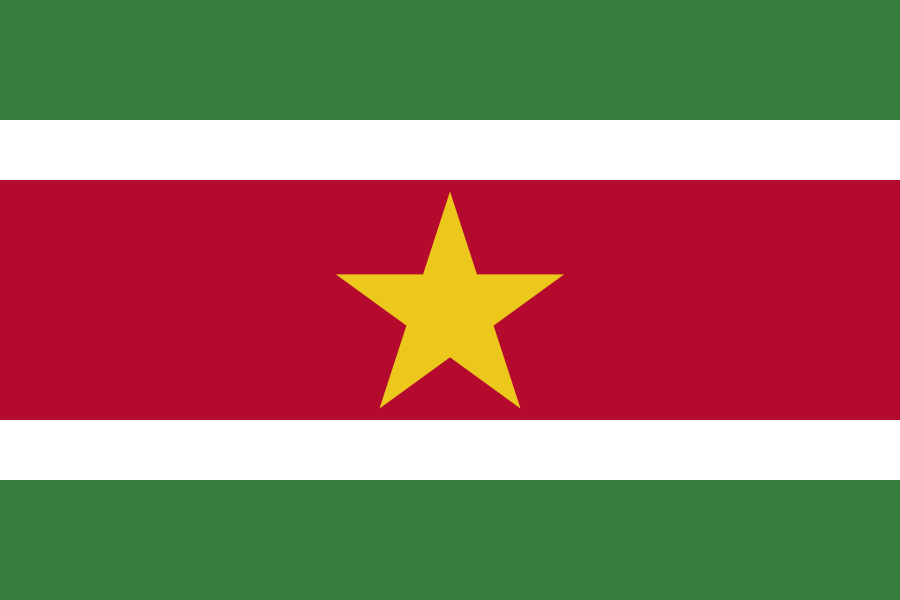The Suriname flag is designed with a tricolor composition, consisting of three horizontal stripes - green, white, and red. Each of these distinct elements carries profound significance that reflects the nation's history, geography, and core values.
- Green Stripe:
Dominating the top portion of the flag and occupying one-third of its height, the green stripe symbolizes the breathtaking natural beauty of Suriname. This vibrant hue represents the country's rich tropical rainforests, fertile lands, and abundant vegetation. As Suriname is located in the northeastern region of South America, the green color also serves as a testament to the vast expanse of dense forests and diverse flora and fauna that thrive within its borders. Moreover, green signifies the nation's natural wealth and its aspirations for a prosperous and sustainable future. - White Stripe:
Nestled in the middle of the flag, the white stripe covers one-third of its height. White has a universal significance as a symbol of peace and harmony. In the context of Suriname's flag, it embodies the nation's commitment to peace, justice, and equality. Suriname's society is characterized by a rich cultural diversity, with people from various ethnic backgrounds, languages, and religious beliefs coexisting in harmony. The white stripe serves as a representation of the shared aspiration for unity, understanding, and solidarity among the country's diverse population. - Red Stripe:
Occupying the bottom one-third of the flag's height, the red stripe holds deep symbolism, denoting courage, strength, and progress. It serves as a poignant reminder of the struggles and sacrifices that paved the way for Suriname's independence and self-determination. The red color commemorates the resilience and determination of the Surinamese people in overcoming challenges and forging ahead on their path to progress.
Gold Star:
Prominently positioned at the center of the white stripe, there lies a five-pointed star in a radiant gold or yellow shade. This majestic star embodies two vital principles - unity and hope. Suriname boasts a rich tapestry of cultures, encompassing diverse communities such as Creoles, Hindustanis, Javanese, Maroons, Amerindians, Chinese, and others. The gold star serves as a powerful symbol of unity among these varied groups, each of which plays an integral role in shaping the country's unique identity and progress. Additionally, the star represents the nation's collective hope for a bright and promising future.
Proportions:
The Suriname flag adheres to a width-to-length ratio of 2:3. This proportion ensures that the width of the flag is two-thirds of its length, contributing to its harmonious and visually pleasing design.
In conclusion, the Suriname flag serves as a powerful and prideful representation of the country's breathtaking natural landscapes, multicultural fabric, and shared vision for a united and prosperous future. Each color and element encapsulates a profound narrative, resonating deeply with the Surinamese people and embodying their shared history and dreams for the nation's continued growth and development.
Last Updated on: August 02, 2023